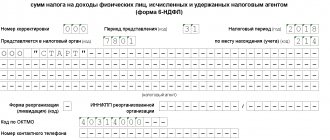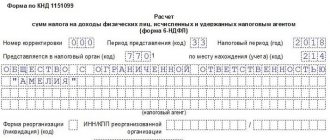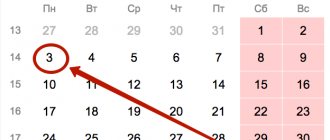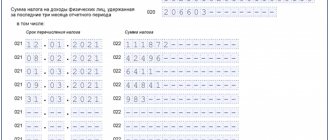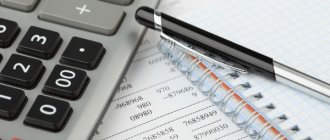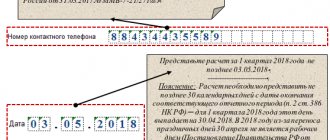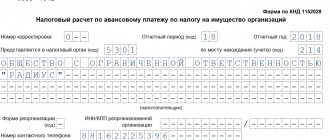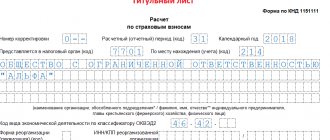Personal income tax is a tax that citizens of the Russian Federation pay to the treasury on the income they receive. Employers are required to transfer personal income tax for employees centrally to the budget in the form of taxes from the enterprise. The legislation has approved two forms by which organizations generate reports on employee income, which also includes information on deductions and accrued taxes. Until 2021, the only report on the income of individuals submitted to the tax office from an enterprise was a certificate in form 2-NDFL. The deduction and income codes changed, but only the principle of generating the certificate remained unchanged: individual information for each employee of the company. Now there are two such forms: 2-NDFL has been supplemented by calculation using form 6-NDFL. These reports are submitted to the inspectorate simultaneously - at the end of each quarter. The difference between 6-NDFL is the consolidation in one document of information relating to personal income tax for individuals who have received any payment from the company in the form of salaries, dividends and payments under other contracts.
How the tax office checks the report
When a completed report is received from an enterprise, the tax office checks it for compliance with the control indicators. The legislation provides for a procedure for checking reports, identifying inconsistencies and an algorithm for issuing requirements and applying penalties. Taxpayers have access to all information on the taxpayer, all reports are consolidated in the taxpayer’s card. Therefore, an organization should take care of such a procedure as checking 2-NDFL before submitting a tax and income tax return, since then it will not be possible to “adjust” the information. Inspectors check received reports for two types of deficiencies:
- Errors inside the report are errors associated with incorrectly specified values in the columns of the report, that is, the relationship between the lines is not satisfied (such errors are found by special accounting programs).
- Lack of necessary relationships between values in three documents: 2-NDFL, 6-NDFL and income tax return (such errors can only be detected manually).
If errors are identified, the inspector requests an explanation of the information from the accountant. If a response to the request is not sent, the tax office may order an audit. During the audit, the organization will be required to provide originals of all documentation used to complete the report to confirm the accuracy of the information. To relieve all accounting personnel from such worries, it is recommended to independently take actions such as checking 6-NDFL, and if an error is discovered by the organization, immediately provide clarification. When filling out, you need to focus on typical errors, including typos, since a typo is considered as unreliable information, even when it is obvious as a technical error.
Control ratios for 6-NDFL in 2021
For any reporting form, there are control ratios. That is, the values of a certain row must correspond to another row, the sum of the rows, be greater or less than some indicators, etc.
Form 6-NDFL is no exception - there are also control ratios for it. 6-NDFL and 2-NDFL, 6-NDFL and RSV - tax authorities compare the indicators of these forms with each other. Any discrepancies will raise questions from the Federal Tax Service.
To avoid claims, you should check 6-NDFL according to the approved ratios.
It is easy to find control ratios - they are in letters from the tax inspectorate No. BS-4-11/ [email protected] and No. BS-4-11/4371, dated 03/10/2016 and 03/13/2017, respectively. In them, accountants learn about the actions of inspectors in each case of identifying inconsistencies. Also in the letters, the Federal Tax Service gives all references to the Tax Code of the Russian Federation, justifying its position.
Interrelation of indicators within the form
Inspectors look at a few lines on the form.
We will show you what to check when sending a report by writing down control ratios in the form of formulas.
Correct: line 020 => line 030. If the data matches the formula, then you can safely submit the report to the Federal Tax Service.
Error: line 020
Correct: line 040 = ((line 020 - line 030) x line 010): 100. If the data matches the formula, then you can safely send the report to the Federal Tax Service.
Error: line 040 ≠ ((line 020 - line 030) x line 010): 100. If you find this discrepancy, double-check that all the numbers are spaced correctly.
When comparing line 040 with the specified calculation formula, it is important to remember the rounding error. Due to rounding, line 040 may differ slightly from the value calculated by the formula.
Example : Snegir LLC employs 27 people. The total income of employees of Snegir LLC from January to September (line 020) is 317,214 rubles. Employees of Snegir LLC were provided with tax deductions of 32,000 rubles. Calculated personal income tax - 37,070 rubles.
The personal income tax determined by the accountant of Snegir LLC when checking the report is equal to 37,078 rubles. ((317,214 - 32,000) x 13%). The calculated figure turned out to be 8 rubles higher than the actual figure (37,078 - 37,070). If Snegir LLC filled out four lines under number 100 in the calculation of 6-NDFL, the acceptable error is 108 rubles (27 people × 1 ruble × 4).
8
Interrelation of indicators 6-NDFL and 2-NDFL
Tax inspectors compare the data from these reports.
First of all, equality must be maintained between the number in line 060 of the 6-NDFL form and the number of 2-NDFL certificates compiled. Let us remind you that 2-NDFL is compiled individually for each employee. Inspectors can easily see how many employees received income in form 6-NDFL.
In addition to equality of individuals, income equality must be observed.
Line 020 of form 6-NDFL (annual) = the total value of the lines “Total amount of income” of all compiled certificates 2-NDFL + lines 020 of Appendix 2 to the income tax return
Inspectors will also check this ratio of indicators: line 040 6-NDFL for the year = the total value of the lines “Calculated amount of tax” of all compiled 2-NDFL certificates + line 030 of Appendix 2 to the “profitable” declaration. As can be seen from the formula, here the tax authorities also take into account the profit declaration.
Accountants can find all the ratios for these forms in the letter of the Federal Tax Service dated March 10, 2016 No. BS-4-11 / [email protected] This letter also identifies possible causes of discrepancies and indicates the actions of inspectors. This way, any tax agent can learn about the consequences of their mistakes.
How to check form 6-NDFL before submitting it to the tax office
Before sending 6-NDFL to the inspector, you should check it for compliance with the form of the report form and the electronic format, as well as for the correctness of completion and accuracy of the indicated indicators in the sections of the report. The control ratios developed and established by law, which were developed by the tax authorities themselves, will help to verify the correctness of the calculations. These indicators will help you detect inconsistencies in the form of simple typos and analyze whether the report has been compiled correctly. The first section of 6-NDFL contains all the information on the enterprise on a cumulative basis for all previous quarters from the beginning of the year, including the current one, and the second section contains information only for the current quarter. The sections perform different functions, so they do not correspond with each other. Therefore, to the assumption: should the amount of accrued income from section 1 of the 6-NDFL report go with the total amount from section 2, the answer is negative. No control relationships between sections can be established.
Checking the title page
To begin with, it is recommended to perform such a simple operation as checking that 6-NDFL is filled out correctly on the title page, then we check both parts of the report. The first sheet contains basic information about the company (name with explanation, codes, address, telephone, etc.); information about the inspection where the enterprise is registered. A separate report is generated and submitted for each branch of the enterprise, where the codes of the corresponding enterprise are indicated; a personal report is provided for the parent company. In accordance with the new changes made to the rules for filling out the title page of personal income tax-6, two lines have been allocated specifically for assignees and three codes have been added for the place of submission of the report. For the initial version of the report, the adjustment code is indicated as 000, and for adjustments - from 1 and successively further, for example, 003. Some employers mistakenly assign code 001 to the initial report.
Checking the first section
The first section should indicate the totals for all previous tax periods for all individuals to whom the company paid money. If an enterprise paid income taxed at different rates for the past reporting period, it will be required to provide the completed first part of the report for each rate on a separate sheet. If personal income tax was calculated at the rates: 13, 15, 30, 35%, then in lines 10 to 50 the manager or accountant of the enterprise enters information in each section number 1, and lines from 60 to 90 - only on page 1 of this first section. If all payments were made based on the tax rate, for example, 13%, then the organization draws up one first section, filling out all lines from 10 to 90.
Checking the second section
The design of the second section is more difficult than the first. It is very important not to make mistakes with dates and amounts. The second section consists of identical blocks for placing information on dates and amounts with lines from 100 to 140. To reliably fill out the second section, you must indicate the dates correctly. To accurately enter information, you need to prepare documentation, from which you can highlight:
- Date of actual receipt of income. This date is not the date when money is issued to an individual. This refers to the date of accrual of income (for salary, for example, this is the last day of the month).
- The date of personal income tax withholding from this income. This is the number of tax withholding from income, and not the number of the payment order for the transfer of tax.
- The last day of the period when the organization was obliged to transfer the personal income tax withheld from this income to the budget.
If these three numbers are the same, then the accountant groups the information and indicates it in one block of lines from 100 to 140. If the dates differ, the blocks are filled out individually for each date, and the number of blocks corresponds to the number of date options.
Connecting control ratios
You can carry out such work as checking whether the calculation of 6-NDFL is correct using control ratios. Control ratios are a sequence of mathematical calculations between certain lines that must coincide with other report indicators, that is, all calculations encrypted in the report lines must, when crossed, give the corresponding results. The organization is not obliged to check the control ratios of 6-NDFL (for the 3rd quarter of 2021, by the way, they will probably differ compared to the 1st quarter of the same year). This procedure is advisory in nature to eliminate elementary errors in the report made by the accountant. Some new accounting programs already include an option such as “check form 6-NDFL”, that is, automatic verification of information entered in the lines of the report for compliance with control ratios. As a result of the analysis, the program offers options for adjusting the data. However, it is recommended to take such a step as checking 6-NDFL yourself, recalculating several or all control ratios manually on a calculator - this will protect the accountant from making adjustments. The letter from the tax service contains twelve points of those indicators, the discrepancy of which will cause additional clarifications from the tax authorities. Here are some of them:
- the actual date of filing 6-NDFL coincides with the date indicated on the title page of the report;
- the calculated value of total income indicated in line 20 must be no less than the value of total deductions on line 30;
- the value of line 40 must correspond to the result of the following operations: the difference between lines 20 and 30 *line 10/100;
- the value from line 40 must be no less than the value from line 50;
- the total amount contributed to the budget must be no less than the delta between the amount of personal income tax actually withheld (line 70) and the value of line 90 (refund to the payer) of the tax.
Returning to the question of how to check 6-NDFL, we will give an example of changes in control ratios. In previous editions of the letters, it was recommended to use 6-NDFL as a control ratio for checking: line 070 should be equal to the sum of lines 140. Let us recall that in line 70 the enterprise informs how much it withheld personal income tax, in line 140 - the same tax with distribution by dates of payment of all types of remuneration. Then the tax authorities changed their minds and admit that this control ratio is not always valid. An exception to the previously proposed ratio was the transfer of actual payments in the quarter following the accrual, for example, of wages. Therefore, some amounts do not fall into line 140 in the second part of the report. There is no violation of the law in this case: one quarter ends, the report is closed, and salaries are paid in the next quarter. Hence the discrepancy in the results according to the verification formula previously proposed by the tax authorities. Based on the assumption that some organizations calculate and pay salaries according to this scheme, the Federal Tax Service excluded this control ratio from the list of mandatory ones. The department confirmed on its official website that this ratio is not mandatory. Therefore, in order to perform such an operation as checking 6-NDFL for 2021 (for any reporting period of this year), there is no need to apply this control ratio. If the accountant nevertheless decides to conduct a more pedantic study of the report being prepared for submission, we remind you that the difference in the values of the highlighted lines is the amount of the actual payment of remuneration on which tax was accrued in the current reporting period, and the payment will be made in the next quarter.
Secret tricks of tax specialists for a quick check of 6-NDFL
Personal income tax is a tax that citizens of the Russian Federation pay to the treasury on the income they receive.
Employers are required to transfer personal income tax for employees centrally to the budget in the form of taxes from the enterprise. The legislation has approved two forms by which organizations generate reports on employee income, which also includes information on deductions and accrued taxes. Until 2021, the only report on the income of individuals submitted to the tax office from an enterprise was a certificate in form 2-NDFL.
The deduction and income codes changed, but only the principle of generating the certificate remained unchanged: individual information for each employee of the company.
Now there are two such forms: 2-NDFL has been supplemented by calculation using form 6-NDFL. These reports are submitted to the inspectorate simultaneously - at the end of each quarter.
The difference between 6-NDFL is the consolidation in one document of information relating to personal income tax for individuals who have received any payment from the company in the form of salaries, dividends and payments under other contracts.
How the tax office checks the report
When a completed report is received from an enterprise, the tax office checks it for compliance with the control indicators. The legislation provides for a procedure for checking reports, identifying inconsistencies and an algorithm for issuing requirements and applying penalties.
Taxpayers have access to all information on the taxpayer, all reports are consolidated in the taxpayer’s card. Therefore, an organization should take care of such a procedure as checking 2-NDFL before submitting a tax and income tax return, since then it will not be possible to “adjust” the information.
Inspectors check received reports for two types of deficiencies:
- Errors inside the report are errors associated with incorrectly specified values in the columns of the report, that is, the relationship between the lines is not satisfied (such errors are found by special accounting programs).
- Lack of necessary relationships between values in three documents: 2-NDFL, 6-NDFL and income tax return (such errors can only be detected manually).
If errors are identified, the inspector requests an explanation of the information from the accountant. If a response to the request is not sent, the tax office may order an audit. During the audit, the organization will be required to provide originals of all documentation used to complete the report to confirm the accuracy of the information.
To relieve all accounting personnel from such worries, it is recommended to independently take actions such as checking 6-NDFL, and if an error is discovered by the organization, immediately provide clarification.
When filling out, you need to focus on typical errors, including typos, since a typo is considered as unreliable information, even when it is obvious as a technical error.
How to check form 6-NDFL before submitting it to the tax office
Before sending 6-NDFL to the inspector, you should check it for compliance with the form of the report form and the electronic format, as well as for the correctness of completion and accuracy of the indicated indicators in the sections of the report.
The control ratios developed and established by law, which were developed by the tax authorities themselves, will help to verify the correctness of the calculations. These indicators will help you detect inconsistencies in the form of simple typos and analyze whether the report has been compiled correctly.
The first section of 6-NDFL contains all the information on the enterprise on a cumulative basis for all previous quarters from the beginning of the year, including the current one, and the second section contains information only for the current quarter.
The sections perform different functions, so they do not correspond with each other.
Therefore, to the assumption: should the amount of accrued income from section 1 of the 6-NDFL report go with the total amount from section 2, the answer is negative. No control relationships between sections can be established.
Checking the title page
To begin with, it is recommended to perform such a simple operation as checking the correctness of filling out 6-NDFL on the title page, then check both parts of the report. The first sheet contains basic information about the company (name with explanation, codes, address, phone number, etc.
); information about the inspection where the enterprise is registered. A separate report is generated and submitted for each branch of the enterprise, where the codes of the corresponding enterprise are indicated; a personal report is provided for the parent company.
In accordance with the new changes made to the rules for filling out the title page of personal income tax-6, two lines have been allocated specifically for assignees and three codes have been added for the place of submission of the report.
For the initial version of the report, the adjustment code is indicated as 000, and for adjustments - from 1 and successively further, for example, 003. Some employers mistakenly assign code 001 to the initial report.
Checking the first section
The first section should indicate the totals for all previous tax periods for all individuals to whom the company paid money. If an enterprise paid income taxed at different rates for the past reporting period, it will be required to provide the completed first part of the report for each rate on a separate sheet.
If personal income tax was calculated at the rates: 13, 15, 30, 35%, then in lines 10 to 50 the manager or accountant of the enterprise enters information in each section number 1, and lines from 60 to 90 - only on page 1 of this first section.
If all payments were made based on the tax rate, for example, 13%, then the organization draws up one first section, filling out all lines from 10 to 90.
Checking the second section
The design of the second section is more difficult than the first. It is very important not to make mistakes with dates and amounts.
The second section consists of identical blocks for placing information on dates and amounts with lines from 100 to 140.
To reliably fill out the second section, you must indicate the dates correctly.
To accurately enter information, you need to prepare documentation, from which you can highlight:
- Date of actual receipt of income. This date is not the date when money is issued to an individual. This refers to the date of accrual of income (for salary, for example, this is the last day of the month).
- The date of personal income tax withholding from this income. This is the number of tax withholding from income, and not the number of the payment order for the transfer of tax.
- The last day of the period when the organization was obliged to transfer the personal income tax withheld from this income to the budget.
If these three numbers are the same, then the accountant groups the information and indicates it in one block of lines from 100 to 140. If the dates differ, the blocks are filled out individually for each date, and the number of blocks corresponds to the number of date options.
Connecting control ratios
You can carry out such work as checking whether the calculation of 6-NDFL is correct using control ratios.
Control ratios are a sequence of mathematical calculations between certain lines that must coincide with other report indicators, that is, all calculations encrypted in the report lines must, when crossed, give the corresponding results.
The organization is not obliged to check the control ratios of 6-NDFL (for the 3rd quarter of 2019, by the way, they will probably differ compared to the 1st quarter of the same year). This procedure is advisory in nature to eliminate elementary errors in the report made by the accountant.
Some new accounting programs already include an option such as “check form 6-NDFL”, that is, automatic verification of information entered in the lines of the report for compliance with control ratios. As a result of the analysis, the program offers options for adjusting the data.
However, it is recommended to take such a step as checking 6-NDFL yourself, recalculating several or all control ratios on a calculator manually - this will protect the accountant from drawing up clarifications. The letter from the tax service contains twelve points of those indicators, the discrepancy of which will cause additional clarifications from the tax authorities.
Here are some of them:
- the actual date of filing 6-NDFL coincides with the date indicated on the title page of the report;
- the calculated value of total income indicated in line 20 must be no less than the value of total deductions on line 30;
- the value of line 40 must correspond to the result of the following operations: the difference between lines 20 and 30 *line 10/100;
- the value from line 40 must be no less than the value from line 50;
- the total amount contributed to the budget must be no less than the delta between the amount of personal income tax actually withheld (line 70) and the value of line 90 (refund to the payer) of the tax.
Returning to the question of how to check 6-NDFL, we will give an example of changes in control ratios. In previous editions of letters it was recommended to use 6-NDFL as a control ratio for checking: line 070 should be equal to the sum of lines 140.
Let us recall that in line 70 the enterprise informs how much it withheld personal income tax, in line 140 - the same tax distributed according to the dates of payment of all types of remuneration. Then the tax authorities changed their opinion and admit that this control ratio is not always valid.
An exception to the previously proposed ratio was the transfer of actual payments in the quarter following the accrual, for example, of wages. Therefore, some amounts do not fall into line 140 in the second part of the report.
There is no violation of the law in this case: one quarter ends, the report is closed, and salaries are paid in the next quarter. Hence the discrepancy in the results according to the verification formula previously proposed by the tax authorities.
Based on the assumption that some organizations calculate and pay salaries according to this scheme, the Federal Tax Service excluded this control ratio from the list of mandatory ones. The department confirmed on its official website that this ratio is not mandatory.
Therefore, in order to perform such an operation as checking 6-NDFL for 2019 (for any reporting period of this year), there is no need to apply this control ratio. If the accountant nevertheless decides to conduct a more pedantic study of the report being prepared for submission, we remind you that the difference in the values of the highlighted lines is the amount of the actual payment of remuneration on which tax was accrued in the current reporting period, and the payment will be made in the next quarter.
We compare 6-NDFL for the year with 2-NDFL and profit declaration
We looked at how to check 6-personal income tax for 9 months, 3 and 6 months using the example of using control ratios along the lines of two parts inside the report. Here's how to check the 6-NDFL report for the year - it is recommended to use additional tools.
As a result of checking, the values of some lines of the 6-NDFL annual report must definitely correlate with the information provided by the organization in the 2-NDFL certificate and profit declaration for the same period.
Tax inspectors use the following control ratios to check the submitted report:
- the value of line 20 (total accrued income) is equal to the amount according to the declared 2-NDFL certificates and the amount in line 20 of the second appendix in the profit declaration;
- the value of line 25 (total dividends accrued) must be equal to the amount according to the declared 2-NDFL certificates and according to code 1010 correspond to Appendix 2 of the declaration;
- line 40 (calculated tax) coincides in value with line 30 of the second appendix of the declaration and with the amount of calculated tax according to the declared 2-NDFL certificates;
- the withheld tax in line 80 corresponds to line 34 of the declaration in Appendix 2 of the declaration and the amount of unwithheld tax according to the declared 2-NDFL certificates;
- the number of individuals who received payments from the enterprise is equal to the number of 2-NDFL certificates and the number of annexes No. 2 prepared for the declaration.
Fines
The deadlines for submitting the 6-NDFL report are established by law, and it is not recommended to violate them, otherwise, penalties will be imposed on the company.
For failure to submit reports, in addition to a fine of 1,000 rubles for each month of delay, the organization faces the possibility that the company's current account will be completely blocked and unblocked only after the report is submitted.
It seems possible to avoid penalties if the organization independently corrects errors and submits clarifications before the inspector identifies the inaccuracies.
For submitting a report containing errors, the organization will be fined, and the tax office will require clarification.
Conclusion
To check the report, the accountant must perform such actions as checking 6-NDFL and 2-NDFL, checking all equalities and ratios in the recommended tax reporting lines. The report will be checked by the tax office if the lines are filled out according to the rules, taking into account the recommendations published by the Federal Tax Service on the official website.
If there are discrepancies and errors are detected, immediately enter the correct information, and if the report has already been sent, then provide the inspectors with clarification. Of course, this is not a complete list of control ratios that help the inspector identify errors in the 6-NDFL report.
Tax authorities constantly publish official letters that regulate the procedure for checking the report before submission. An accountant should carefully monitor the news of the Federal Tax Service website in order to stay informed, avoid mistakes, and therefore avoid penalties and additional charges for false information.
The tax authorities check the submitted report only for the correctness of the control ratios. Inspectors inspect the reliability of the numbers and dates indicated by the organization in the 6-NDFL report during an on-site inspection, when the organization provides documentation: contracts, certificates of benefits, birth certificates of children, etc.
Therefore, it is recommended to keep photocopies of documentation confirming benefits for deductions and originals of civil law contracts in order to provide them to the inspector during an on-site inspection.
Source: https://NalogObzor.info/publ/stati_iz_tematicheskikh_zhurnalov/fns_vypustila_rekomendacii_kak_proverit_raschet_po_forme_6_ndfl_pered_sdachej/71-1-0-2589
We compare 6-NDFL for the year with 2-NDFL and profit declaration
We looked at how to check 6-personal income tax for 9 months, 3 and 6 months using the example of using control ratios along the lines of two parts inside the report. Here's how to check the 6-NDFL report for the year - it is recommended to use additional tools. As a result of checking, the values of some lines of the 6-NDFL annual report must definitely correlate with the information provided by the organization in the 2-NDFL certificate and profit declaration for the same period. Tax inspectors use the following control ratios to check the submitted report:
- the value of line 20 (total accrued income) is equal to the amount according to the declared 2-NDFL certificates and the amount in line 20 of the second appendix in the profit declaration;
- the value of line 25 (total dividends accrued) must be equal to the amount according to the declared 2-NDFL certificates and according to code 1010 correspond to Appendix 2 of the declaration;
- line 40 (calculated tax) coincides in value with line 30 of the second appendix of the declaration and with the amount of calculated tax according to the declared 2-NDFL certificates;
- the withheld tax in line 80 corresponds to line 34 of the declaration in Appendix 2 of the declaration and the amount of unwithheld tax according to the declared 2-NDFL certificates;
- the number of individuals who received payments from the enterprise is equal to the number of 2-NDFL certificates and the number of annexes No. 2 prepared for the declaration.
Program for checking 6 personal income taxes for 2021
Income paid on the eve of this weekend, according to officials, will be considered an advance, income tax from which is withheld and transferred only at the end of the month (the next time employees are paid salaries). This leads to the following algorithm for filling out the 2nd section of 6-NDFL:
- Mon date (p. 120) - the day following the tax withholding date.
- UN date (p. 110) - the date of the nearest payment is given, from which personal income tax can be withheld;
- FPD date (p. 100) - indicates the last day of the month (in this case, a non-working day);
But there is another approach, which we described in the article. When issuing income to an individual not in money, but in a product (goods, things, objects), it is considered that the agent paid the income in kind.
6-NDFL for the 3rd quarter (9 months) of 2021
In our case, this is the third quarter of 2021. This section of the report contains:
- the deadline for transferring income tax to the budget is line 120;
- tax withholding date - line 110;
- the amount of income actually received - line 130;
- date of receipt of income - line 100;
- amount of personal income tax withheld - line 140.
Please note that filling out the 6-NDFL calculation is not an easy task.
You can only understand how the calculation is filled out in practice.
Control ratios for 6-NDFL in 2021
In addition to equality of individuals, income equality must be observed.
Line 020 of form 6-NDFL (annual) = the total value of the lines “Total amount of income” of all compiled 2-NDFL certificates + lines 020 of Appendix 2 to the income tax return Inspectors will definitely check this ratio of indicators: line 040 6-NDFL for the year = the total value of the lines “Calculated tax amount” of all compiled 2-NFDL certificates + lines 030 of Appendix 2 to the “profitable” declaration.
As can be seen from the formula, here the tax authorities also take into account the profit declaration.
Accountants can find all the ratios for these forms in the letter of the Federal Tax Service dated March 10, 2016 No. Also, this letter identifies possible causes of discrepancies and indicates the actions of inspectors. This way, any tax agent can learn about the consequences of their mistakes.
Both 6-NDFL and RSV are reports on people.
Form 6-NDFL - sample filling, online preparation
Calculation form 6-NDFL for 2021 Calculation form 6-NDFL for 2019 Calculation form 6-NDFL for 2021
How to submit 6-NDFL All tax agents with a staff of more than 25 people are required to submit quarterly and annual calculations of personal income tax amounts exclusively in electronic form using.
A new electronic version of form 6-NDFL can be prepared on our website. Who submits the 6-NDFL report and where: Tax agents - Russian organizations that have separate divisions, send the calculation of personal income tax amounts in relation to individuals who received income from such separate divisions to the tax authorities
On our website you can download the latest versions of the CheckXML and CheckPFR reporting verification programs.
- Never worked in VLSI? You get a discount!
- 50% discount on annual license
- 80% discount on annual licenses
- 30% discount on similar annual license
For users of Kontur-Extern, Argos and other programs
The discount is provided for connecting single individual entrepreneurs, legal entities or groups of companies.
Prompt connection of the 1C-Reporting service on the day of application
- Testing of all reports submitted to the Pension Fund of Russia, the Social Insurance Fund and the Federal Tax Service (the relevance of the testing modules is maintained in accordance with the versions of the bodies to which the reports are submitted).
- A unique feature of its kind: testing includes checking with CheckXML and CheckPFR (formerly CheckXML-UFA).
Verification of documents (files) valid since 2010:
- Quarterly reporting according to the RSV-1 form
- RSV-2 and RSV-3
- personalized accounting documents SZV-6-4, ADV-6-5, ADV-6-2, SPV-1
As well as other files transferred to the Pension Fund with the following types of documents:
- Personal data
- Individual information about length of service and earnings SZV-6-1, SZV-6-2, SZV-6-3, ADV-6-3, SZV-4-1, SZV-4-2
- Statements of payment of insurance premiums
- Applications for exchange of insurance certificates
- Applications for the issuance of a duplicate insurance certificate
- Death certificates
- Forms for DSV (voluntary insurance contributions)
- Quarterly reporting in the form of RSV-1, RSV-2 and RSV-3
- personalized accounting documents SZV-6-1, SZV-6-2, ADV-6-2, SZV-6-4, SPV-1, ADV-11
- SZV-M
The software product “SbiS++ Electronic Reporting” allows you to manage the preparation and sending of several types of reports, including for the Pension Fund of Russia. This saves time and protects against errors when entering data, since information for tax, accounting and pension documents is automatically downloaded from the enterprise’s common database.
The CheckXML and CheckPFR programs for testing Pension Fund reporting are already connected to “” and run automatically. As soon as a request to submit reports electronically is received, CheckXML and CheckPFR begin scanning the data for errors and typos.
After the check is completed, you will see the results in a separate window.
6-NDFL for 9 months of 2021: example of filling out
When making a payment, it is prohibited:
- print the report on both sides of the sheet;
- damage report sheets when fastening them.
- correct errors by overwriting them with a proofreader;
Before submitting the form, it is recommended to check the control ratios from the letters of the Federal Tax Service dated March 20, 2019.
Source: https://konsalt74.ru/programma-dlja-proverki-6-ndfl-za-2019-67731/
Fines
The deadlines for submitting the 6-NDFL report are established by law, and it is not recommended to violate them, otherwise, penalties will be imposed on the company. For failure to submit reports, in addition to a fine of 1,000 rubles for each month of delay, the organization faces the possibility that the company's current account will be completely blocked and unblocked only after the report is submitted. It seems possible to avoid penalties if the organization independently corrects errors and submits clarifications before the inspector identifies the inaccuracies. For submitting a report containing errors, the organization will be fined, and the tax office will require clarification.
Filling line 030 - example
Let’s say an organization employs 8 workers. Total income for 9 months. 2021 is 2,160,000 rubles. During this period, the staff were provided with the following deductions:
- Standard for children - three employees use deductions in the amount of 1,400 rubles.
- Property - according to the notification of the Federal Tax Service, one employee applies a deduction for the purchase of housing. Amount from January 2021 = 38,000 rubles.
In addition, due to a difficult life situation, the employer provided one employee with financial assistance in the amount of 12,000 rubles. Let's look at how to fill out lines 020, 030, 040 in 6-NDFL:
- Page 020 = 2160000 + 12000 = 2172000 – reflects the total amount of income.
- Page 030 = 3 x 1400 x 9 + 4000 = 41800 – the total amount of deductions provided is calculated.
- Page 040 = (2172000 – 41800) x 13% = 276926 – tax calculated for 9 months. 2021
Taking into account all benefits, the employer for 9 months. 2021 will accrue personal income tax in the amount of 276,926 rubles. Deductions are provided for the children of employees, as well as for the amount of financial assistance issued in the amount of 4,000 rubles.

